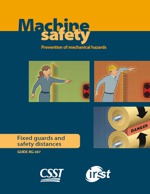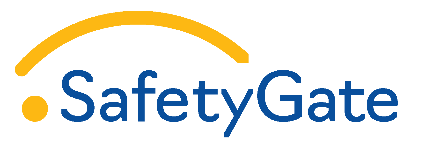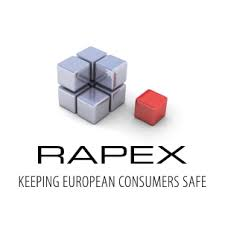
Machine Safety
Prevention of mechanical hazards
Fixed guards and safety distances
This guide mainly discusses the prevention of mechanical hazards.
It describes methods for eliminating hazards at source or for reducing them, as well as ways to protect against them by using fixed guards.
The risk reduction or distance protection principles presented in the guide are general and are appropriate for the majority of machines.
For some machines (for example, conveyors, metal presses, drills, rubber machines, etc.), before applying the generic solutions proposed in this guide, one should consult Québec regulations, standards relating to these machines (ISO, CSA, ANSI, etc.), or the technical guides published by the CSST (such as the guide Sécurité des convoyeurs à courroie), or by other organizations (ASP, INRS, IRSST, etc.), which can provide details on how to ensure the safety of these machines.
This guide is not an exhaustive collection of solutions, but it covers some of the currently known protection principles.
For more information on machine safety, refer to the bibliography at the end of the document, or consult the Web site: www.centredoc.csst.qc.ca.
1. General information
1.1 Plan of the guide
1.2 Current laws and regulations
1.3 Definitions of the terms used in this guide
2. General risk-management principles
2.1 Risk assessment
2.1.1 Risk analysis
2.1.2 Risk evaluation
2.2 Risk reduction
2.2.1 Hazard elimination and risk reduction
2.2.2 Guards and protective devices
2.2.3 Warnings, work methods and personal protective equipment
2.2.4 Training and information
2.2.5 Verification of the final result
3. Guards
3.1 Fixed guards
3.2 Choice of type of guards
4. Protection against crushing hazards
4.1 Protection using a minimum gap between the moving components
4.2 Protection by reducing the forces and energy levels of moving components
5. Safeguarding by distance
5.1 Access by reaching upwards
5.2 Access by reaching over a fixed distance guard
5.3 Access by reaching through an opening in a guard
5.3.1 Openings in the guard
5.3.2 Tunnel guards
5.3.3 Limiting movement
5.4 Access by reaching under a guard
5.4.1 Lower and upper limbs
5.4.2 Lower limbs only
5.4.3 Limiting movement
6 Protection of in-running nips
6.1 Creation of in-running nips
6.2 Delimiting the drawing-in zone
6.3 General information on the use of fixed nip guards
6.3.1 Protection of two cylinders in contact
6.3.2 Protection of two cylinders not in contact
6.3.3 Protection of a cylinder close to a stationary component
6.3.4 Protection of a cylinder in contact with a stationary flat surface
6.3.5 Protection of a cylinder in contact with a belt or a flat moving component
Appendix
Appendix A Quick reference: Hazards
Appendix B Annex B of ISO 14120:2002
Appendix C Figure 1 of ISO 12100-2:2003
Appendix D Examples of use
IRSST
Institut de recherche Robert-Sauvé en santé et en sécurité du travail (IRSST) et Commission de la santé et de la sécurité du travail du Québec (CSST)
Legal deposit - Bibliothèque et Archives nationales du Québec, 2009
ISBN 978-2-550 (French version)
ISBN 978-2-89631-341-9





































